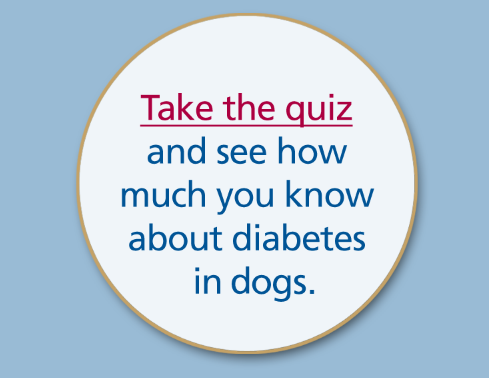Diabetes in Dogs
What is canine diabetes?
Diabetes mellitus, the clinical name for “sugar diabetes,” is a condition that affects the concentration of glucose, or sugar, in your dog’s blood. Diabetes results when the dog’s body makes too little insulin or doesn’t process insulin properly.
Insulin affects how your dog’s body uses food. When your dog eats, food is broken down into very small components its body can use. One component, carbohydrate, is converted into several types of simple sugars, including glucose. Glucose is absorbed from the intestines into the blood, where it travels to cells throughout the body. Inside cells, insulin helps turn glucose into fuel. If there’s too little insulin available, glucose can’t enter cells and can build up to a high concentration in the bloodstream. As a result, a diabetic dog may want to eat constantly, but will appear malnourished because its cells can’t absorb glucose.



